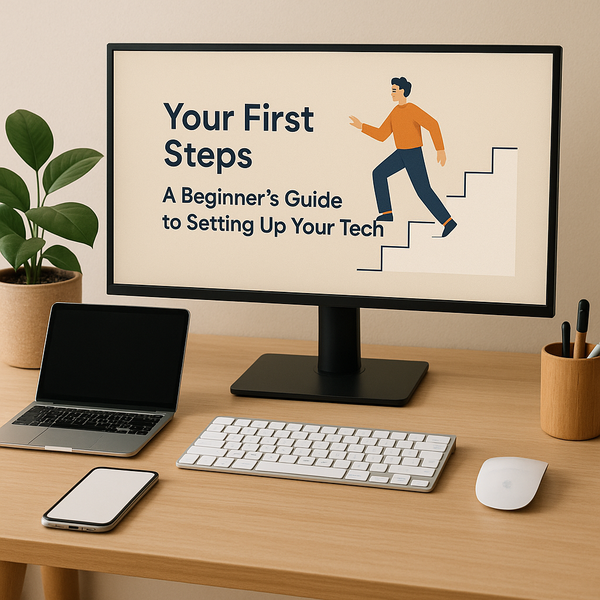
Starting out with technology can feel overwhelming, especially when you're faced with choosing and connecting devices for the first time. Whether it's for work, learning, or staying connected with friends and family, having a functional and comfortable tech setup is essential in today's world. This guide is designed to walk you through the basics, helping you build a reliable foundation for your digital life without the confusion.
Essential Devices for Beginners
The core of any tech setup usually involves a primary computing device and a way to connect to the internet. For beginners, the choice often comes down to a laptop or a desktop computer. Laptops offer portability, making them great if you need to work from different locations. Desktops are typically more powerful for the price and easier to upgrade, ideal if your tech stays in one place. Consider your budget and intended use – simple tasks like browsing, email, and document editing don't require high-end specifications. Budget laptops or entry-level desktops are often more than sufficient. Look for options like Chromebooks for basic tasks, Windows laptops for versatility, or MacBooks if you prefer Apple's ecosystem.
A smartphone is also a near-essential piece of tech for most beginners. It keeps you connected on the go, provides access to apps, and serves as a communication hub. While there's a vast range of smartphones, a beginner simply needs a device that can run essential apps, make calls, and access the internet reliably.
Peripherals and Accessories
Once you have your main device, consider peripherals to enhance your experience. An external monitor can significantly improve productivity, giving you more screen space than a laptop alone. Sizes between 22 and 27 inches with full HD resolution are popular and affordable. A comfortable keyboard and mouse are crucial, especially if you're using a laptop docked at a desk. Ergonomic options can prevent strain over time. Decide if you prefer wired connections for reliability or wireless for a clutter-free desk – many affordable wireless keyboard mouse combos are available.
For online meetings or calls, a basic webcam and microphone are necessary. Many laptops have these built-in, but an external one often provides better quality. A printer might be useful for printing documents or labels, though many tasks can now be done digitally. Consider an all-in-one printer that can also scan and copy for added functionality.
Networking Basics
Connecting to the internet is fundamental. A reliable Wi-Fi router is the gateway to your home network. Most internet service providers offer a router, but purchasing your own can sometimes offer better performance or features. Setting up a home Wi-Fi network involves plugging in the router, connecting it to your modem, and following simple instructions to set up a network name (SSID) and password. For the most stable connection, especially for devices like desktop computers or gaming consoles, using an Ethernet cable is recommended over Wi-Fi.
Essential Software & Accounts
Beyond the operating system (Windows, macOS, Chrome OS), several software applications are essential. A web browser (like Chrome, Firefox, Edge, or Safari) is needed to surf the internet. An office suite is vital for creating and editing documents, spreadsheets, and presentations. Free alternatives like Google Workspace (online) or LibreOffice (desktop) are excellent starting points before considering paid options like Microsoft 365.
Computer security software, like an antivirus program, is crucial to protect against malware and viruses. Many operating systems have built-in security, but extra protection can provide peace of mind. Setting up secure passwords and being cautious about downloads and links are also key security practices for beginners. Cloud storage services (Google Drive, Dropbox, OneDrive) are useful for backing up files and accessing them from different devices.
Finally, setting up an email account is necessary for communication, online accounts, and signing up for services. Gmail, Outlook, and Yahoo Mail are popular free options. Learn the basics of sending/receiving emails and managing your inbox.
Setting Up Your Space
Where you place your tech is just as important as the tech itself. An ergonomic desk and chair setup can make long hours much more comfortable. Ensure your monitor is at eye level and your keyboard and mouse are positioned to allow comfortable wrist posture. Good lighting reduces eye strain. Lastly, cable management can help keep your workspace tidy and organized, preventing tangled wires and making it easier to clean.
Setting up your first tech environment is an exciting step into the digital world. By focusing on essential devices, understanding basic networking, installing necessary software, and creating a comfortable physical space, you can build a setup that meets your needs. Don't be afraid to explore, learn as you go, and customize your setup over time. Welcome to the journey!

